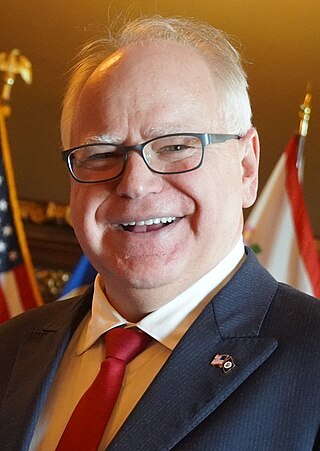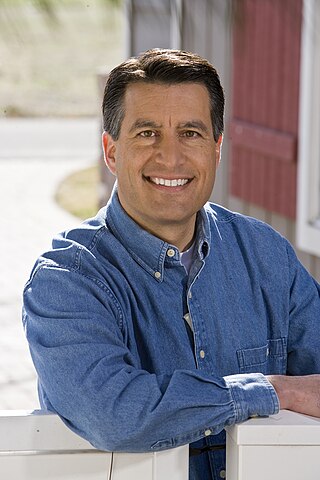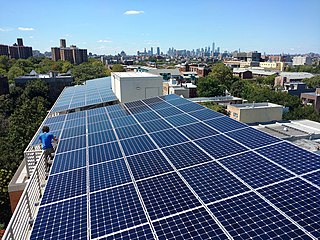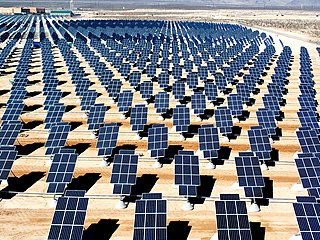Related Research Articles

The International Atomic Energy Agency (IAEA) is an intergovernmental organization that seeks to promote the peaceful use of nuclear energy and to inhibit its use for any military purpose, including nuclear weapons. It was established in 1957 as an autonomous organization within the United Nations system; though governed by its own founding treaty, the organization reports to both the General Assembly and the Security Council of the United Nations, and is headquartered at the UN Office at Vienna, Austria.

The governor of Minnesota is the head of government of the U.S. state of Minnesota, leading the state's executive branch. Forty people have been governor of Minnesota, though historically there were also three governors of Minnesota Territory. Alexander Ramsey, the first territorial governor, also served as state governor several years later. State governors are elected to office by popular vote, but territorial governors were appointed to the office by the United States president. The current governor of Minnesota is Tim Walz of the Democratic-Farmer-Labor Party (DFL).

Brian Edward Sandoval is an American politician, academic administrator, and former federal judge who served as the 29th Governor of Nevada from 2011 to 2019.

NV Energy is a public utility which generates, transmits and distributes electric service in northern and southern Nevada, including the Las Vegas Valley, and provides natural gas service in the Reno–Sparks metropolitan area of northern Nevada. Based in Las Vegas, Nevada, it serves about 1.3 million customers and over 40 million tourists annually.
A Renewable Portfolio Standard (RPS) is a regulation that requires the increased production of energy from renewable energy sources, such as wind, solar, biomass, and geothermal, which have been adopted in 38 of 50 U.S. states and the District of Columbia. The United States federal RPS is called the Renewable Electricity Standard (RES). Several states have clean energy standards, which also allow for resources that do not produce emissions, such as large hydropower and nuclear power.

The California Energy Commission, formally the Energy Resources Conservation and Development Commission, is the primary energy policy and planning agency for California.

Solar power includes solar farms as well as local distributed generation, mostly on rooftops and increasingly from community solar arrays. In 2022, utility-scale solar power generated 145.6 terawatt-hours (TWh), or 3.4% of electricity in the United States. Total solar generation that year, including estimated small-scale photovoltaic generation, was 204 TWh.

The Arizona Corporation Commission is the Public Utilities Commission of the State of Arizona, established by Article 15 of the Arizona Constitution. Arizona is one of only fourteen states with elected commissioners. The Arizona Constitution explicitly calls for an elected commission, as opposed to a governor-appointed commission, which is the standard in most states, because its drafters feared that governors would appoint industry-friendly officials. They are directly elected statewide and serve staggered four-year terms. Due to its separation from the executive branch, the commission is often referred to as the "fourth branch of government." The characterization of the Commission as the "fourth branch of government" is contradicted, however, by Article III of the Arizona Constitution, which provides that "[t]he powers of the government of the state of Arizona shall be divided into three separate departments, the legislative, the executive, and the judicial".
The following table indicates the party of elected officials in the U.S. state of Oregon:
The Nevada Department of Cultural Affairs (DCA) was a governmental agency in the U.S. state of Nevada.

New York energy law is the statutory, regulatory, and common law of the state of New York concerning the policy, conservation, taxation, and utilities involved in energy. Secondary sources have also influenced the law of energy in the Empire State.

Solar power in Nevada is growing due to a Renewable Portfolio Standard which requires 50% renewable energy by 2030. The state has abundant open land areas and some of the best solar potential in the country.

Solar power in Arizona has the potential to, according to then-Governor Janet Napolitano, make Arizona "the Persian Gulf of solar energy". In 2012, Arizona had 1,106 MW of photovoltaic (PV) solar power systems, and 6 MW of concentrated solar power (CSP), bringing the total to over 1,112 megawatts (MW) of solar power. As an example, the Solana Generating Station, a 280 MW parabolic trough solar plant, when commissioned in 2013, was the largest parabolic trough plant in the world and the first U.S. solar plant with molten salt thermal energy storage.

The Copper Mountain Solar Facility is a 802 megawatt (MWAC) solar photovoltaic power plant in Boulder City, Nevada, United States. The plant was developed by Sempra Generation. When the first unit of the facility entered service on December 1, 2010, it was the largest photovoltaic plant in the U.S. at 58 MW. With the opening of Copper Mountain V in March 2021, it again became the largest in the United States. It is co-located with the 64 MW Nevada Solar One, 150 MW Boulder Solar, and 300 MW Techren Solar projects in the Eldorado Valley, thus forming a more than 1 gigawatt (GW) solar generating complex. By comparison, generating capacity at the nearby Hoover Dam is about 2 GW.

Solar power in Maine on rooftops, utilizing 6,300 megawatts (MW) of solar panels, can provide 60% of the electricity used in Maine according to a 2016 U.S. Department of Energy study. Maine and Vermont are tied for the second highest rooftop solar potential in the country, only behind the state of California. A 2020 estimate suggests that a typical 5.6 kilowatt (kW) residential system will pay for itself in 6-7 years and generate a profit of $45,000 over the rest of its 25-year life from the tax credits and utility savings.
Toquop Energy Project is a proposed energy facility located in Lincoln County near Mesquite, Nevada.

Stephen F. Sisolak is an American businessman and politician who served as the 30th governor of Nevada from 2019 to 2023. A member of the Democratic Party, he served on the Clark County Commission from 2009 to 2019 and on the Nevada Board of Regents from 1999 to 2008.
Net metering in Nevada is a public policy and political issue surrounding the rates that Nevada public utilities are required to pay to purchase excess energy produced by electric customers who generate their own electricity, such as through rooftop solar panels. The issue centers around the question paying solar customers the retail or wholesale rate for the generated electricity.
The Nevada State Office of Energy, also known as the Nevada Governor's Office of Energy, is a Nevada state agency that focuses on managing and regulating Nevada's energy resources to ensure that they can meet the needs of local industries while also adhering to renewable energy and energy conservation principles. The current director of the Nevada Office of Energy is David Bobzien. The agency is headquartered in Carson City, Nevada.
References
- ↑ "Nevada lawmakers approve renewable energy authority". Las Vegas Review-Journal. June 26, 2009. Retrieved 2016-06-15.
- ↑ "Chapter 321". 2009 Statutes of Nevada. May 28, 2009. Retrieved 2016-06-15.
- ↑ "Sandoval signs bill to merge Nevada energy departments". KVVU-TV. June 17, 2011. Retrieved 2016-06-15.
- ↑ "Chapter 363". 2011 Statutes of Nevada. June 13, 2011. Retrieved 2016-06-15.
- ↑ "Governor names Energy Commissioner and Energy Director" (PDF). Nevada State Office of Energy. Archived from the original (PDF) on 15 March 2012. Retrieved 17 July 2011.